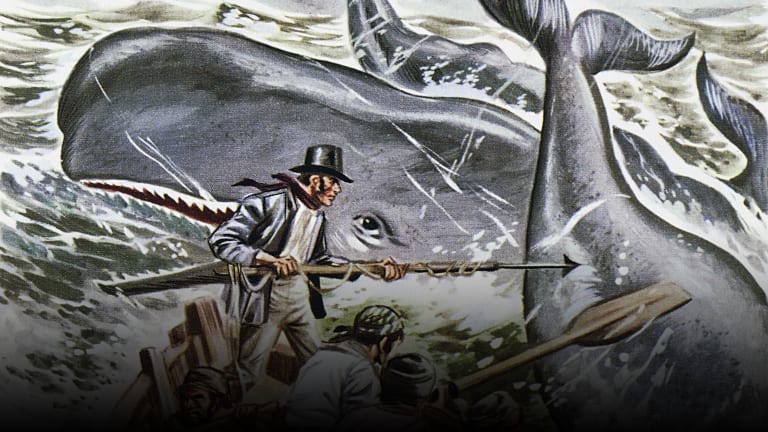
FAQ About Moby Dick

How does Melville use symbolism in "Moby-Dick"?
Melville uses symbolism extensively in "Moby-Dick," with many objects and characters representing deeper meanings beyond their literal significance. Here are a few examples of symbolism in the novel:
Moby Dick: The giant white sperm whale represents the destructive power of nature and the unknowable mysteries of the universe.
The Pequod: The name of the ship represents the doomed fate of the crew, as the real-life Pequot tribe was nearly wiped out by European colonizers.
The whalebone scrimshaw: The scrimshaw, or intricate carvings made by the sailors from whalebone and other materials, represents the creative impulse of humanity even in the face of overwhelming adversity.
The color white: The color white is associated with themes of purity, transcendence, and the unknown, as represented by Moby Dick and the vast, unknowable ocean.
Queequeg's tattoos: The tattoos on Queequeg's body represent his spiritual beliefs and his connection to his culture and heritage.
These are just a few examples of the extensive use of symbolism in "Moby-Dick." Melville employs symbolism throughout the novel to explore complex themes and ideas in a rich and multifaceted way.
